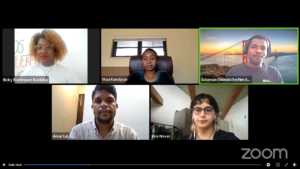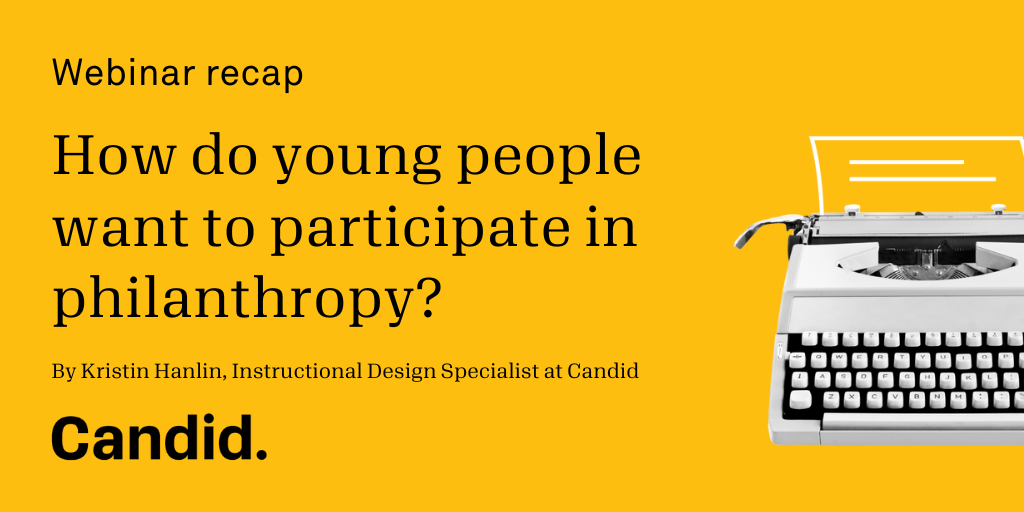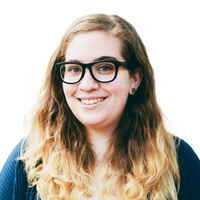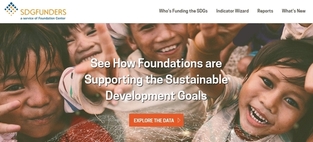How do young people want to participate in philanthropy? A webinar recap
Although young people were statistically less likely to experience health-related impacts from COVID-19, their lives were disrupted in many ways. As a former educator, I witnessed the impact of virtual schooling on teenagers ranging in age from 14-18. Lacking social connection and the structure provided by in-person schooling resulted in a fragmented population of students. Mental health issues that existed before the pandemic were made worse and, upon the return to in-person schooling, it was apparent that young people would be dealing with the damages from the COVID-19 pandemic for many years to come.
Though these are just a few examples of ways the pandemic affected young people in America, the world’s youngest generation was affected on a global scale.
Where many organizations saw an impassable roadblock, Global Fund for Children (GFC) and the Avast Foundation saw an opportunity to address some of the problems made more complex by the pandemic and create systemic change by establishing the Spark Fund.
What is the Spark Fund?
GFC and the Avast Foundation established the Spark Fund, an innovative participatory fund designed and decided by youth, to empower the next generation to advocate for human rights in the digital age.
Four regional youth panels were established in Southern Africa, South Asia, Europe & Eurasia, and the Americas. These panels consisted of youth grantmakers – roughly 76% of whom had never made funding decisions before—making decisions themselves with advisement and support from GFC. Some of the funding focus areas were social justice, climate change, and mental health.
In each regional Spark Fund panel, youth grantmakers created their own grant criteria and application questions. Then, they collectively decided on who and what they wanted to fund and the amount they wanted to award.
The webinar
Recently, GFC and its Youth Leadership Council held The Youth Spark: A Transition to Youth-focused Grantmaking to celebrate International Youth Day. This webinar explored ways in which young people would like to play a part in the philanthropic community.
Youth grantmakers from Asia, Southern Africa, Europe, and the Americas shared their insights and experiences as Spark Fund participants during this virtual event. The speakers all agreed that one of the most important aspects of effective grantmaking to address the needs of young people is including the voices, perspectives, and knowledge of young people in the decision-making process.
Insights from youth grantmakers
The webinar, featuring insights from a panel of youth grantmakers, was moderated by Solomon Ndondo, founder and executive director of the Africa Rise Foundation and chair of Global Fund for Children's Youth Leadership Council. During the webinar introduction, Ndondo outlined the impact of the Spark Fund and explained that the Spark Fund panelists were able to help 56 organizations in 13 countries around the world.
Amar Lal, Irina Novac, Moui Kandjoze, and Bicky Bohórquez Bastidas spoke about their time with the Spark Fund and the funding decisions they helped make in their respective committees.
Reflections on the process
Moui Kandjoze, a participant in the African Spark Fund panel, explained how her group found their confidence as grantmakers with the help of GFC.
 Kandjoze said that her grantmaking panel “didn’t really know where to begin.” She then said that the Spark Fund gave the youth grantmakers tools, such as a voting platform designed by Shared Nation. This platform allowed participants to favorite their top applicants. The applicants then moved to a pairwise voting round. During this round, Spark Fund panelists created the shortlist of applicants for final discussion and decision-making, which helped them establish a consensus-based approach to grantmaking.
Kandjoze said that her grantmaking panel “didn’t really know where to begin.” She then said that the Spark Fund gave the youth grantmakers tools, such as a voting platform designed by Shared Nation. This platform allowed participants to favorite their top applicants. The applicants then moved to a pairwise voting round. During this round, Spark Fund panelists created the shortlist of applicants for final discussion and decision-making, which helped them establish a consensus-based approach to grantmaking.
Though initially apprehensive and aware of “the learning curve” involved, Kandjoze explained that she believed her grantmaking panel did well with the guidance provided.
Kandjoze noted that members of the grantmaking committee she worked with as part of the African Spark Fund panel aimed to highlight organizations that “would often be overlooked.” She was grateful that GFC allowed the youth grantmakers to make their own decisions to fund organizations that “really had the heart” and let her committee establish a culture of trust-based philanthropy in their decision-making.
Irina Novac, a member of the first Spark Fund cohort, echoed Kandjoze’s call to lift up voices that often go unheard and touched on the issues that were addressed by participants in her grantmaking panel.
Novac described the applications her cohort received: “We had a lot of applications, and they were all very diverse, and we—it was so many issues that young people were dealing with in their regions—but at the same time, we also noted the need for more projects that were focused on youth in rural areas in our countries because they do not really have access to enough—or even any—personal growth opportunities.”
Amar Lal explained the process that the Asian Spark Fund panel went through in its pursuit of organizations to fund. First, the selected youth grantmakers came together to discuss what issues they had each seen firsthand in their respective countries. Then, they specified three of these issues that would inform their funding decisions. After selecting their focus areas, the panelists reviewed applications linked to their funding goals.
Lal’s grantmaking committee received almost 200 applications from three countries. Even with so many applications to review, the youth grantmakers wanted to focus on “those youth-led organizations who are working at the grassroots level for real change” because those organizations reflected the grantmakers themselves.
Lessons learned
A member of the Spark Fund panel serving the Americas, Bicky Bohórquez Bastidas, was asked to share the most significant lessons learned during her time as a Spark Fund participant. She said:
“I think the biggest lesson I learned was to learn to listen to different points of view. Because clearly, we have to understand that not everyone thinks the same. And so, to be able to reach a consensus for the good of the population of a community was very important. To be able to do teamwork was very powerful.”
Bohórquez Bastidas also spoke on the various broadcasting methods, ranging from radio to text messaging, used to reach more rural grantees and the value these rural applicants added to her experience: “We received so many applications that, every time we read one of the applications, it was just very emotional. A lot of feelings came to the surface because we got applications from places that don’t normally get taken into account—that are made invisible.”
Throughout the webinar, each youth grantmaker repeated the notion that participatory grantmaking is the best way to meet the needs of populations in crisis.
Amar Lal commented that the best advice for funders going forward is “you need to listen to the voice of the people” and entrust those on the frontlines to build solutions.
Next steps
You can watch the full recorded webinar, or if you are interested in learning more about the Spark Fund and future public-access webinars, you can sign up for GFC’s mailing list.



